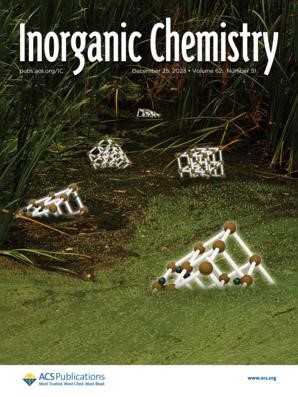Clarkson University Chemistry Research on Tunable Materials for Phosphate Sensors Featured on the Cover Page of American Chemical Society (ACS) Journal - Inorganic Chemistry
Clarkson University research performed in the laboratory of Professor Silvana Andreescu, the Egon Matijevic Chair in Chemistry to develop tunable probes for phosphate detection was recently highlighted on the cover page of Inorganic Chemistry. The work was performed by Mohamed Hassan, who completed his PhD in chemistry at Clarkson University last year and is currently a postdoctoral fellow at the University of Pennsylvania.

Andreescu research on materials for phosphate targets the development of field-portable devices for real time monitoring and removal of phosphate in eutrophic regions to prevent water eutrophication. Water eutrophication due to phosphate pollution is a global concern because excessive amounts of phosphate can lead to overgrowth of harmful algal blooms and an overall degradation of water quality.
Andreescu and Hassan’s work describes the rational design of constituent building blocks in a metal organic framework (MOF) that have the ability to bind phosphate at concentration levels meeting the requirement for phosphate monitoring in eutrophic waters. Their study establishes MOF-based fluorescence sensing as a tool for rapid and inexpensive detection of phosphates in aqueous environments.
“We expect that the knowledge generated from this study will provide the foundation for the development of novel materials and technologies for water quality monitoring. This recognition is a testament of the quality and reputation of our research in the chemistry and materials science community,” said Andreescu.
The work has been funded by the New York State Center of Excellence (CoE) in Healthy Water Solutions at Clarkson University and SUNY ESF, the Karel Czanderna '77 and Dan Shirkey ‘80 Clarkson Ignite graduate fellowship, and a USDA-AFRI grant awarded to the Clarkson team to develop technology solutions for preventing eutrophication.
To read more about this research, click here.
